

Marathon Pace Perfect. To run your best marathon, you need to set a challenging but realistic goal and prepare meticulously.
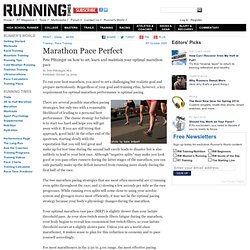
Regardless of your goal and training ethic, however, a key requirement for optimal marathon performance is optimal pacing. There are several possible marathon pacing strategies, but only two with a reasonable likelihood of leading to a personal best performance. The classic strategy for failure is to start too hard and hope you will get away with it. If you are still trying that approach, good luck! At the other end of the spectrum, starting slowly with the expectation that you will feel great and make up for lost time during the second half rarely leads to disaster but is also unlikely to lead to your best race.
The two marathon pacing strategies that are most often successful are 1) running even splits throughout the race; and 2) slowing a few seconds per mile as the race progresses. McMillan Running - Training Tips. About six years ago, I started drinking a Slim-Fast About six years ago, I started drinking a Slim-Fast™ shake after my Sunday long runs.
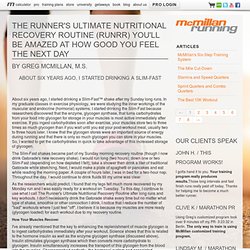
In my graduate classes in exercise physiology, we were studying the inner workings of the muscular and endocrine (hormonal) systems. I started drinking the Slim-Fast because researchers discovered that the enzyme, glycogen synthase, that turns carbohydrates from your food into glycogen for storage in your muscles is most active immediately after exercise. McMillan Running - Training Tips. How I Prescribe Long Runs for Maximum Success Ahh, the marathon long run.
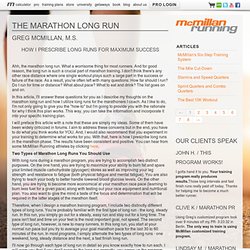
What a worrisome thing for most runners. And for good reason, the long run is such a crucial part of marathon training. I don't think there's any other race distance where one single workout plays such a large part in the success or failure of the race. 5 Tips for Marathon Pacing. More than 90 percent of marathoners run the second half of the marathon significantly slower than the first.
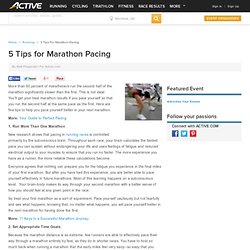
This is not ideal. You'll get your best marathon results if you pace yourself so that you run the second half at the same pace as the first. Here are five tips to help you pace yourself better in your next marathon. More: Your Guide to Perfect Pacing 1. New research shows that pacing in running races is controlled primarily by the subconscious brain. McMillan Running - Calculator. How to Predict Marathon Time. The Lost Art of Fartlek. In 2004, I helped a very talented runner build a solid aerobic base for the U.S.
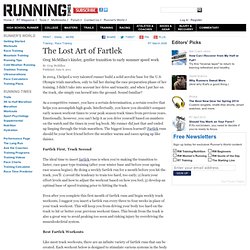
Olympic trials marathon, only to fail her during the race preparation phase of her training. I didn't take into account her drive and tenacity, and when I put her on the track, she simply ran herself into the ground. Sound familiar? Determining Your Heart Rate Training Zones. Sport zones for Running - Running - Maximize performance - Training Articles - Training. Being in the Zone - D3 Multisport.
Being in the Zone A Refresher on Training Zones Reading through all the different methodology regarding heart rate training can be confusing.
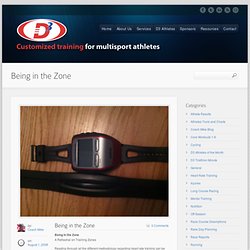
This article is a refresher on heart rate training and training zones. I have dedicated some time to understanding all the different methods that different coaches may use and I like the way Joe Friel[i] presents the training zones best. Beginner Triathlete. How many of you triathletes out there are using this formula?
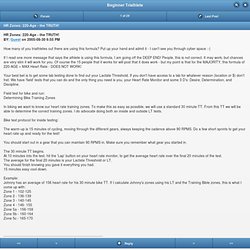
Put up your hand and admit it - I can't see you through cyber space :-) If I read one more message that says the athlete is using this formula, I am going off the DEEP END! People, this is not correct. Running 101: Training With A Heart Rate Monitor. Heart rate monitors are useful, but hardly essential.
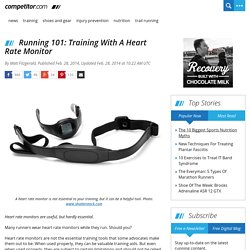
Many runners wear heart rate monitors while they run. Should you? Heart rate monitors are not the essential training tools that some advocates make them out to be. When used properly, they can be valuable training aids. But even when used properly, they are subject to certain limitations and should not be relied on too heavily. Five popular marathon training programs: Which one is right for you? - Wichita Running. There are many different marathon programs out there on-line that guarantee a successful marathon.

It can be confusing and time consuming to search thru all the programs. Fitness for Racquetball and Squash. Racquetball is a demanding sport on your muscular-skeletal system: your muscles, tendons, and joints are taxed tremendously with the quick direction changes and bursts of sprints and stops.
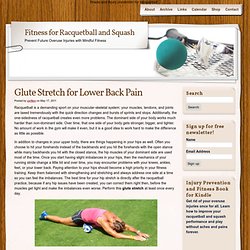
Additionally, the one-sidedness of racquetball creates even more problems. The dominant side of your body works much harder than non-dominant side. Over time, that one side of your body gets stronger, bigger, and tighter. No amount of work in the gym will make it even, but it is a good idea to work hard to make the difference as little as possible. In addition to changes in your upper body, there are things happening in your hips as well.
Get down on the ground on your hands and feet with your glutes up in the air. Yoga for Flexibility. The Four Best Strength Training Exercises For Runners - Page 2 of 5. 5 Quick Strength Exercises For Runners. Strength-Training Circuit For Distance Runners. These eight exercises will help improve general strength and overall body balance. While a consistent running regimen will do a great job of strengthening your legs and lungs, it won’t do much for many of the muscles in the rest of your body. A basic 30 to 45 minute strength-training session once or twice a week will improve overall body balance and help lessen the likelihood of an overuse injury. No need to get fancy: your own body weight, a set of dumbbells, and a stability ball will do the trick. Four Key Core Exercises For Runners - Page 5 of 5.
Reduce the risk of injuries without ever leaving your living room! Strong legs are a must for runners, but to become a more resilient athlete making sure you have strong core is key. “[Core] muscles are vital and they don’t always get worked enough with just running,” explained Carl Leivers, an Atlanta-based running coach. “If you don’t have hours to spend in the gym it’s always best to focus on core muscles—and not just abs. Creatine Effects. That man is Richard Kreider, a soft-spoken amiable southerner who toiled for many years at Old Dominion University under the protective wing of the man often called the 'living legend' of ergogenic research - Mel Williams. Kreider has now moved on to the campus of the University of Memphis and has fired up a fine new investigative team in the town where a dead rock and roll star is still King. It's already clear that Kreider's work is going to help a variety of different athletes, including runners, set some sparkling new PBs Recently Kreider and his helpers divided 52 NCAA Division IA football players into four groups.
During five weeks of intensive. Creatine - Useful Supplement for Marathon Runners, Endurance Athletes? If you are to use creatine in your endurance training, you will need to learn from the lessons of the study. The subjects gained weight, which you don't want as an endurance trainee, because they took 12 grams each day. A better amount would be 5 grams, even though as little as 3 grams would be fine. To begin with, do not bother with any types of creatine that are not "creatine monohydrate. " If you have any issues with monohydrate, such as stomach upset, bloating, or weight gain, you can look into some other proven forms. Creatine and Distance Running. The Four Best Strength Training Exercises For Runners - Page 5 of 5. Single-Leg Squats Balancing on one foot and squat down, bending at the knee and sitting your hips back as if you are going to sit in a chair behind you. Once down to about a 90 to 115 degree angle in your knee, extend your leg back up to standing.
If this is too challenging allow the toes of your hovering foot to lightly rest on the ground. Complete eight to 12 repetition then switch to the other leg. Stay Loose: Stretches for Runners. By Josh ClarkPosted Sunday, 31 March, 2002 There's an endless number of runners who seem perfectly able to squeeze in many hours of running every week but who just don't seem to have the time to stretch for five or ten minutes before and after. Find the time. Sure, it's not as fun as hitting the road, and the benefits may not be as immediately obvious. The Sydney Morning Herald Half Marathon. New South Wales Running Calendar.